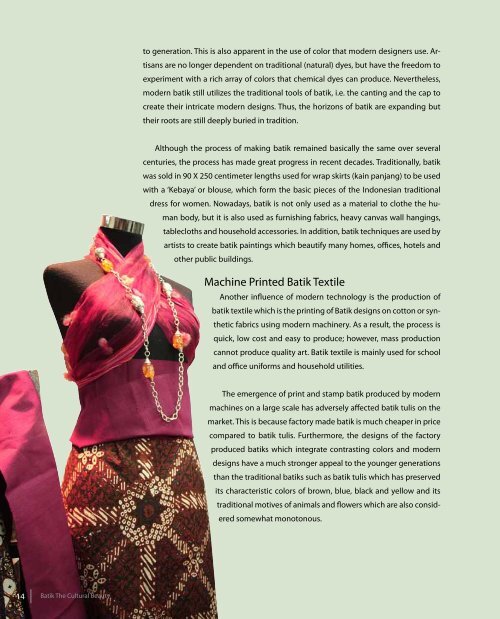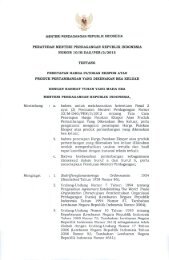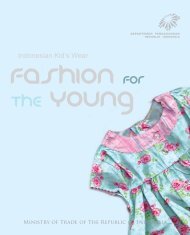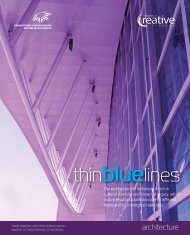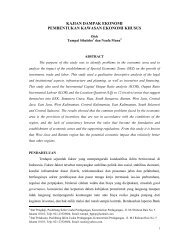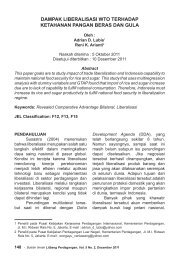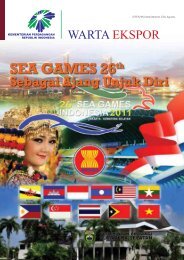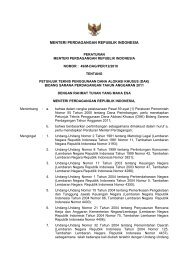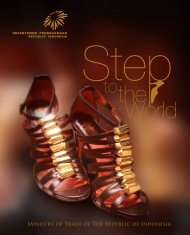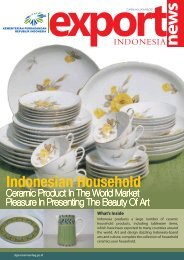Batik Garment - Kemendag
Batik Garment - Kemendag
Batik Garment - Kemendag
You also want an ePaper? Increase the reach of your titles
YUMPU automatically turns print PDFs into web optimized ePapers that Google loves.
to generation. This is also apparent in the use of color that modern designers use. Artisans<br />
are no longer dependent on traditional (natural) dyes, but have the freedom to<br />
experiment with a rich array of colors that chemical dyes can produce. Nevertheless,<br />
modern batik still utilizes the traditional tools of batik, i.e. the canting and the cap to<br />
create their intricate modern designs. Thus, the horizons of batik are expanding but<br />
their roots are still deeply buried in tradition.<br />
Although the process of making batik remained basically the same over several<br />
centuries, the process has made great progress in recent decades. Traditionally, batik<br />
was sold in 90 X 250 centimeter lengths used for wrap skirts (kain panjang) to be used<br />
with a ‘Kebaya’ or blouse, which form the basic pieces of the Indonesian traditional<br />
dress for women. Nowadays, batik is not only used as a material to clothe the human<br />
body, but it is also used as furnishing fabrics, heavy canvas wall hangings,<br />
tablecloths and household accessories. In addition, batik techniques are used by<br />
artists to create batik paintings which beautify many homes, offices, hotels and<br />
other public buildings.<br />
Machine Printed <strong>Batik</strong> Textile<br />
Another influence of modern technology is the production of<br />
batik textile which is the printing of <strong>Batik</strong> designs on cotton or synthetic<br />
fabrics using modern machinery. As a result, the process is<br />
quick, low cost and easy to produce; however, mass production<br />
cannot produce quality art. <strong>Batik</strong> textile is mainly used for school<br />
and office uniforms and household utilities.<br />
The emergence of print and stamp batik produced by modern<br />
machines on a large scale has adversely affected batik tulis on the<br />
market. This is because factory made batik is much cheaper in price<br />
compared to batik tulis. Furthermore, the designs of the factory<br />
produced batiks which integrate contrasting colors and modern<br />
designs have a much stronger appeal to the younger generations<br />
than the traditional batiks such as batik tulis which has preserved<br />
its characteristic colors of brown, blue, black and yellow and its<br />
traditional motives of animals and flowers which are also considered<br />
somewhat monotonous.<br />
14 <strong>Batik</strong> The Cultural Beauty


